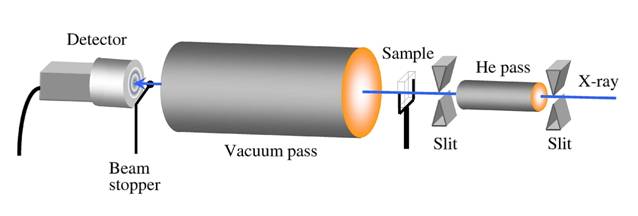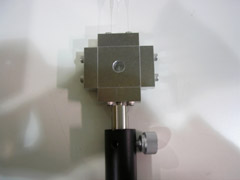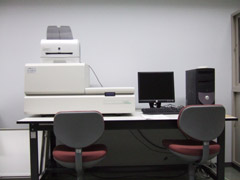- HOME
- SAGA Light Source
- User Information
- Beamlines
- BL15 : experimental equipment
BL15 : experimental equipment
Small-angle X-ray scattering (SAXS)
Experimental setup
-
Measurements in transmission geometry (for powders, liquids, etc.) and reflection geometry (for thin films) are performed at the beamline. The experimental arrangement depends on the sample morphology.
-
Camera length is 2.2 m in transmission geometry and 1.5 m in reflection geometry.
-
Three beam stoppers (sizes: 3, 5, 8 mm) are prepared.
Detector
-
CCD camera with an image intensifier (spatial resolution: 0.1 × 0.1 mm2/pixel, 10 bits)
-
Imaging plate (spatial resolution: 0.05 × 0.05 mm2/pixel, 16 bits)

Experimental setup of SAXS (transmission geometry)
-
The first slit defines the incident beam size. The second slit eliminates scattering from the blades of the first slit.
-
Wide-angle X-ray scattering (WAXS) measurements are also possible by changing the camera length (the minimum length is 0.3 m).
-
Scattering patterns from liquid samples can be observed by using a glass capillary (maximum capillary size is 2 mm).
-
A CCD camera (C4880-80, Hamamatsu Photonics KK) is operated in real time for adjusting the instruments. In the measurement, imaging plates are mainly used to store the scattering patterns. The time for storage is 30~60 minutes (depending on the sample and experimental arrangement).
-
Please prepare a “blank” sample for subtracting the background in order to obtain pure scattering patterns from a target material.
-
An IP Reader (Fig. 2) and image processing software (MultiGuage, Fit2d) are available. The data size of the image is very large. Please bring high-capacity data storage devices, such as a memory stick or a portable hard disk drive.
 Fig. 1 Capillary holder |
 Fig. 2 IP reader (BAS-2500: Fuji Film) |